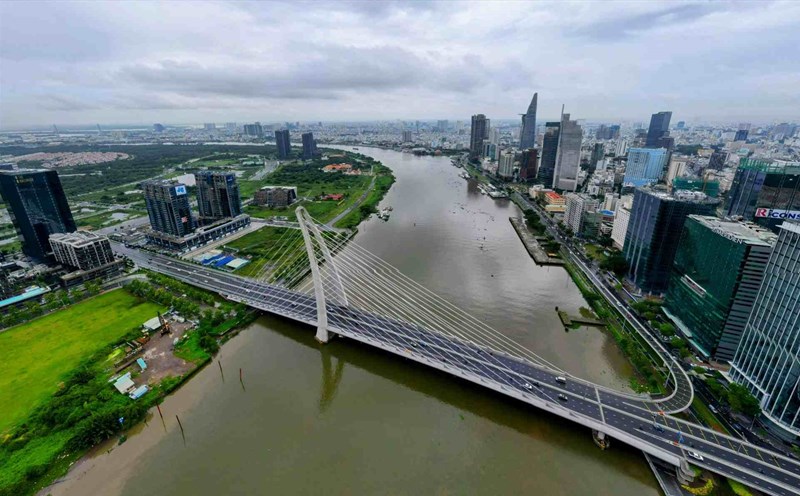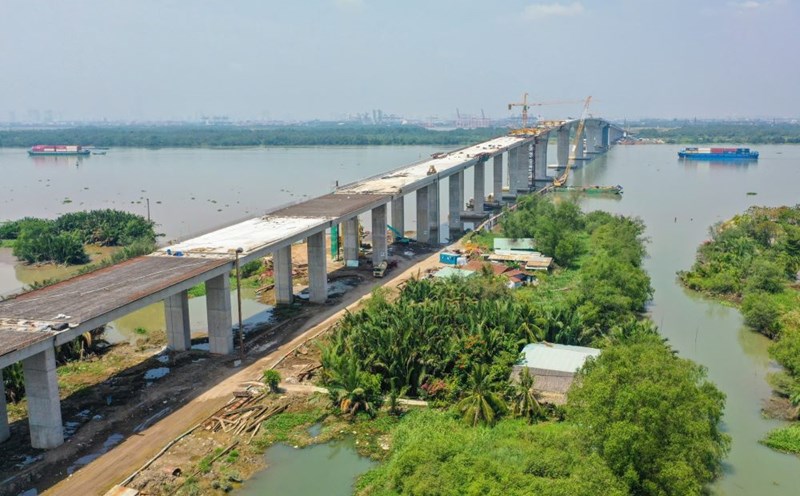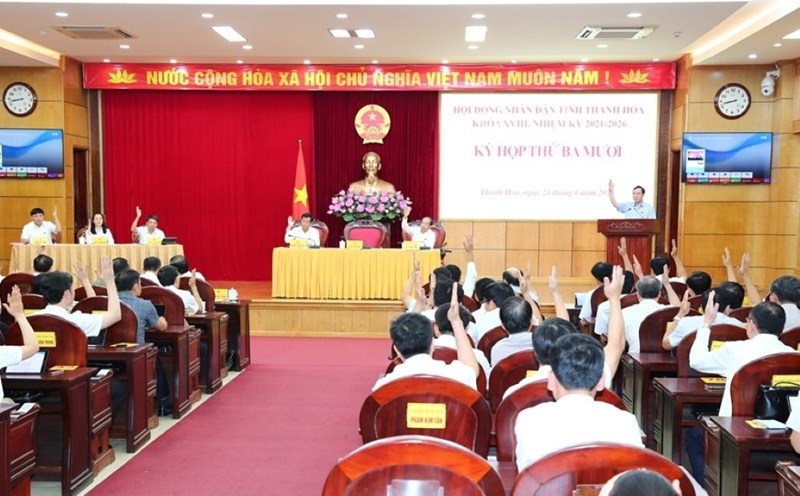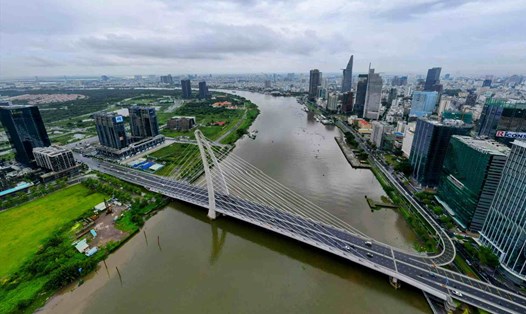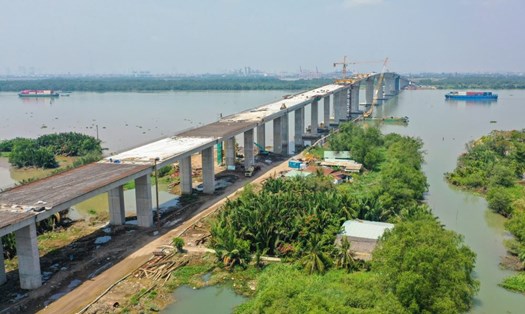Water coconut leaf-shaped pedestrian bridge
The pedestrian bridge across the Saigon River has just started construction at the location between the Ba Son Bridge and the Saigon River tunnel.
The bridgehead on the District 1 side is located at Bach Dang Wharf Park, about 125m south of Me Linh Construction Site. On the side of Thu Thiem New Urban Area (Thu Duc City), the foot of the bridge belongs to the riverside park at the intersection of Nguyen Thien Thanh and N 14, streets.
This 720m long bridge is designed in the image of water coconut leaves. a typical plant species of the Southern region. This architecture not only brings a simple traditional look but also harmoniously combines with the modernity of Ho Chi Minh City.
According to Mr. Tran Quang Lam - Director of the Ho Chi Minh City Department of Transport, the project uses a spatial steel arch structure. applied for the first time in Vietnam, promising to become one of the most unique walking bridges in the world.
To ensure safety and aesthetics, the design consultancy unit. a joint venture of Chodai, Takashi Niwa Architects and Chodai Kisojiban Vietnam. has carefully calculated factors such as the impact of wind, earthquake, train collision, etc. The project is expected to be completed on April 30, 2026.
In addition to the pedestrian bridge, Ho Chi Minh City is also preparing to implement the Thu Thiem 4 bridge project across the Saigon River, connecting the Thu Thiem New Urban Area with District 7.

According to the proposal of the Department of Transport, Thu Thiem 4 Bridge is more than 2km long, has 6 lanes and is specially designed: the main span on the river can be raised to 45m to facilitate the movement of large ships. This is a type of bridge unprecedented in Vietnam, helping to facilitate waterway traffic without spending much space on access roads like Phu My Bridge.
Can Gio Bridge is one of the key projects, replacing Binh Khanh ferry, connecting the center of Ho Chi Minh City with Can Gio district. Initially, the bridge was designed with a cable-stayed tower 230m high, simulating the image of the typical mangrove tree of Can Gio. However, after consideration, the city decided to change it to two towers to ensure safety and optimize costs. The project has a clearance of 55m and is expected to integrate a high-speed urban railway line from District 7 to Can Gio.
Both Thu Thiem 4 Bridge and Can Gio Bridge are targeted by Ho Chi Minh City for implementation in the 2025 - 2028 period.
Bridges with great tourism potential
In Vietnam, Dragon Bridge in Da Nang is a clear testament to the successful combination of unique architecture and tourism potential. The new bridges in Ho Chi Minh City are also expected to create a similar effect, attracting domestic and foreign tourists.
According to the representative of the design unit, walking across the Saigon River is a project with high technical requirements, unprecedented in the world. With experience from major projects such as Akashi Kaikyo Bridge (Japan), Rainbow Bridge Tokyo Bridge or Incheon Bridge (Korea), the design team committed to bring a quality building, in harmony with the urban landscape, contributing to promoting the modern and sustainable development of Ho Chi Minh City.

Mr. Bui Xuan Cuong - Vice Chairman of Ho Chi Minh City People's Committee - commented: "The pedestrian bridge was built in a prime location right in the city center, not only serving traffic but also being an ideal destination for people and tourists. The project will help synchronize the landscape when a series of other projects such as riverside roads, underground space, and international passenger ports are implemented in the future".
Architect Khuong Van Muoi - a member of the Ho Chi Minh City Architecture Advisory Council, emphasized that the pedestrian bridge not only helps people conveniently move between District 1 and Thu Thiem but is also a work of urban art, connecting the past and future of the city.
With a prime location, the pedestrian bridge will become an event venue, community space and an attractive destination for tourists, similar to famous bridges in the world.

